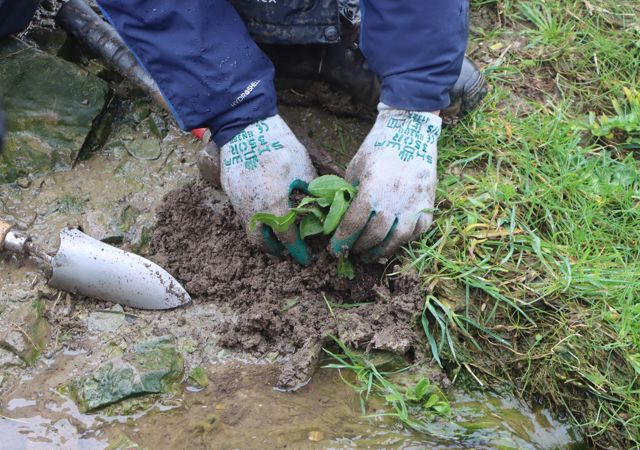Endangered coastal plant reintroduced to South Wales conservation area

A collaborative project led by Natural Resources Wales (NRW) has reintroduced dozens of rare Shore Dock plants in the Southerndown Coast Site of Special Scientific Interest (SSSI) along the Glamorgan Heritage Coast.
Shore Dock is a globally threatened plant and has recently become extinct from the Dunraven Bay Special Area of Conservation (SAC), which is located within the wider Southerndown Coast SSSI.
Within Wales, it is currently only found in coastal areas on Anglesey and in Pembrokeshire, although Pembrokeshire’s Shore Dock population was reduced following storms in 2013 and 2014. In the rest of the UK, it is mostly found in Devon and Cornwall.
Shore Dock was first discovered in Dunraven Bay in 1934 and continued to be recorded there until 1958. It was rediscovered in 1996 with Dunraven Bay SAC designated with Shore Dock as a key species in 2004.
Since then, Shore Dock has disappeared from the Dunraven Bay SAC due to erosion and rock falls which has been exacerbated in recent years due to more frequent and more extreme storm events linked to climate change, and was last seen by NRW officers in 2018.
Although there has been discussion of bolstering the population in the past, this project to look at the feasibility of reintroducing Shore Dock began in 2021.
Suitable sites were selected, and 60 plug plants were grown by the National Botanic Garden of Wales from seeds collected from plants from Dunraven a few years ago.
On 3 April, Dr Kevin McGinn, Curator of Seed Bank and Herbarium and Ellyn Baker from National Botanic Garden of Wales, Louise Bebb from Glamorgan Heritage Coast joined conservation specialists, Julian Woodman, Ryan Paddock, Alexis Alders and Libby Brooks from NRW and set out on foot along the coast path to the selected sites and carefully planted the plug plants.
Ryan Paddock, Conservation Officer for NRW and project lead, said:
“These protected conservation areas are the most important sites for Wales’ natural heritage and play a major part in our work to ensure nature’s recovery.
“We have a responsibility to conserve the favourable status of these designated habitats and species. Monitoring and reintroduction of species, where appropriate, is vital to achieve this.
“Fortunately, the seed from the Shore Dock plants in Dunraven Bay were collected and banked before it disappeared. These were then used by the National Botanic Garden of Wales to grow new plants and to bolster the seed in storage.
“The Dunraven Bay population will be an important seed-source for recolonisation of Bristol Channel dunes and beachheads.
“We’ve recorded the exact locations of each plant using GPS devices to allow us to monitor them.
“We hope to see these plants growing and establishing within these sites over the next few years and to spread to other areas within the conservation area without further intervention.”
Reintroduction into protected areas requires careful planning before planting.
The feasibility study to determine if reintroduction would be possible was led by Dr Phil Wilson, an expert on species conservation in the UK.
He surveyed the length of the Southerndown Coast SSSI for suitable locations and found 11 sites that had some of the correct criteria, such as being flushed, stable ground, vegetation that would not out-compete the Shore Dock, and access to the site.
Of those 11 sites, two met all the requirements and were chosen for the reintroduction.
The project is funded by Welsh Government’s Nature Networks fund - a three-year programme which aims to address the nature emergency in Wales through increasing biodiversity, improving the condition of protected sites and enhancing the resilience and connectivity of habitats and species.
